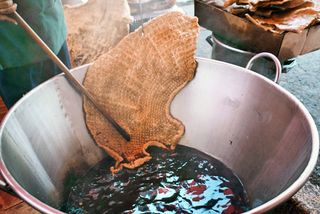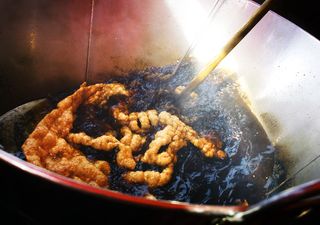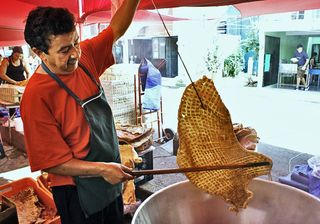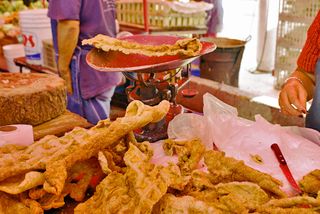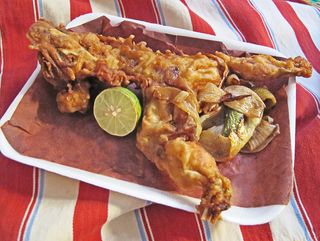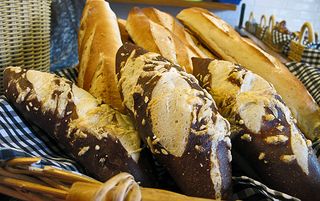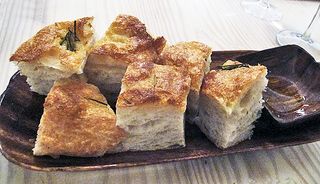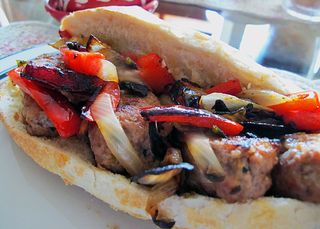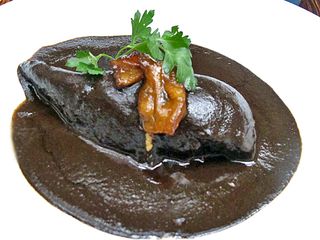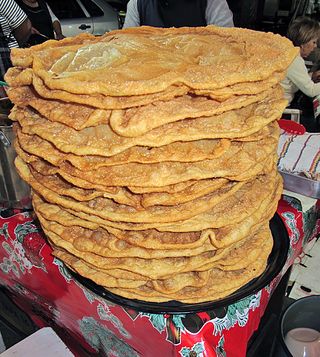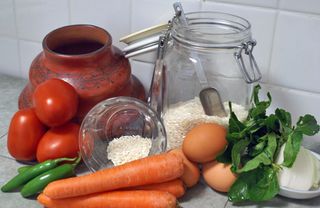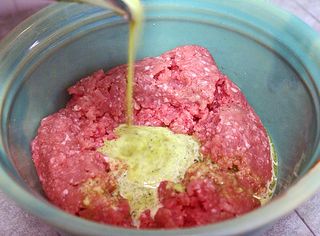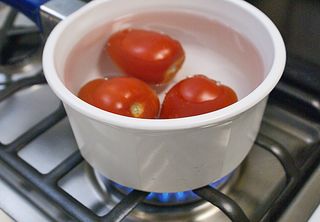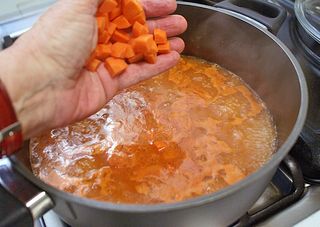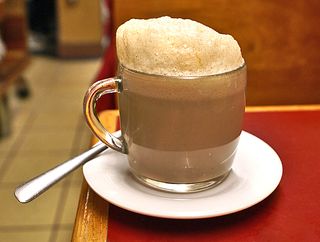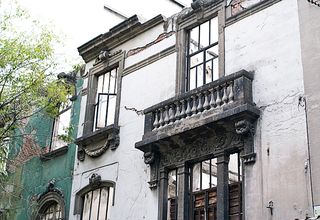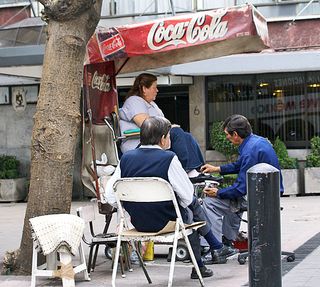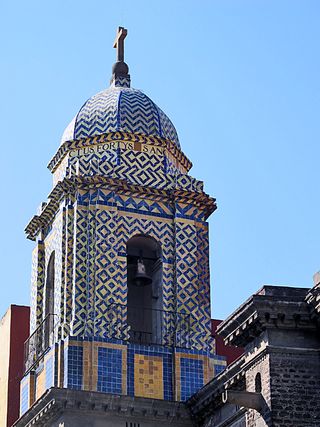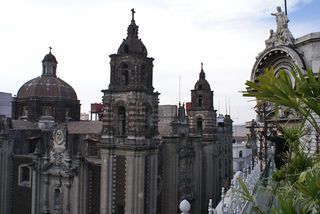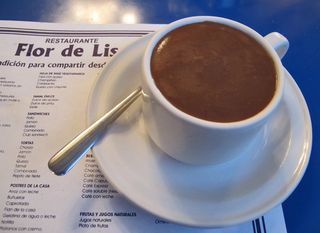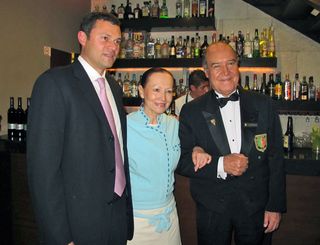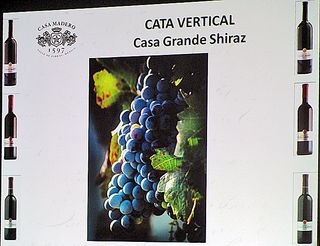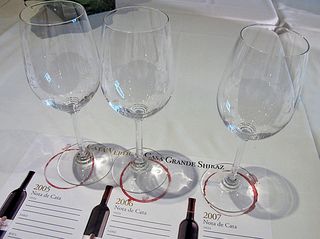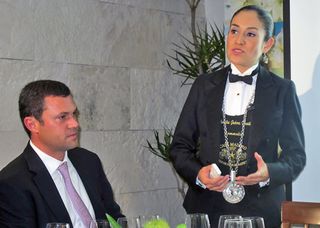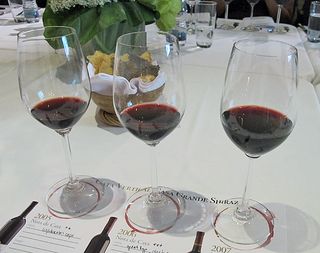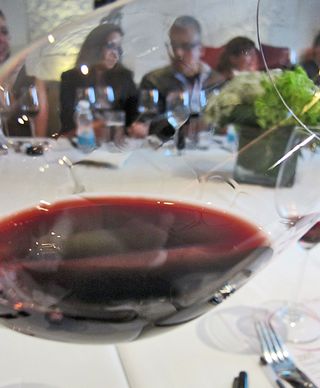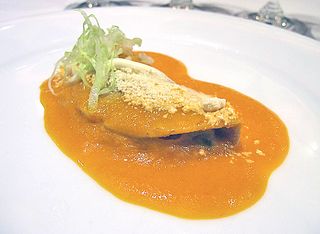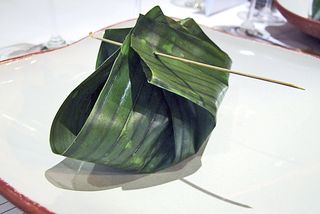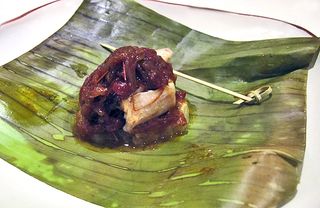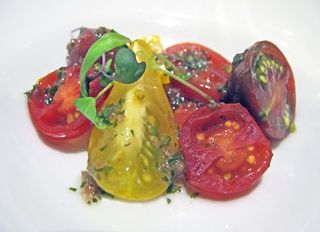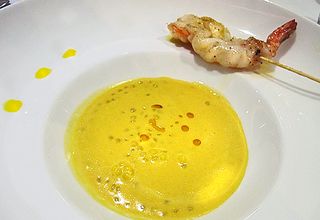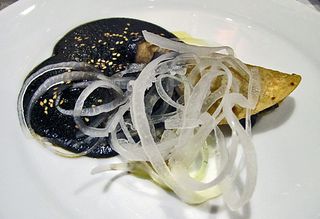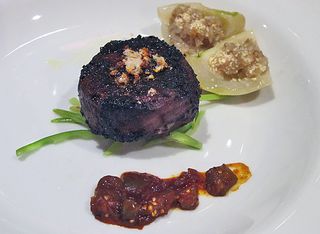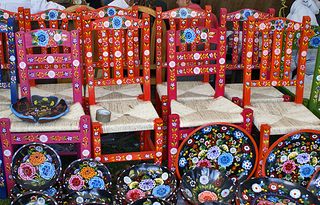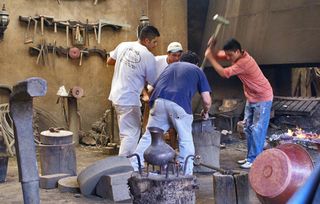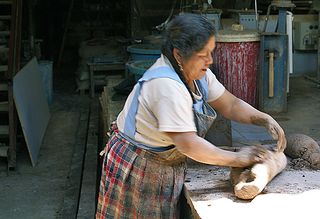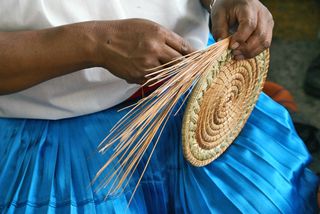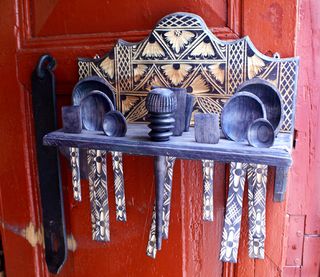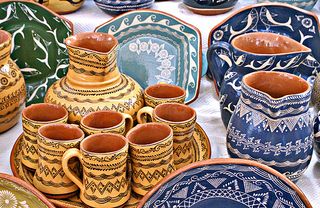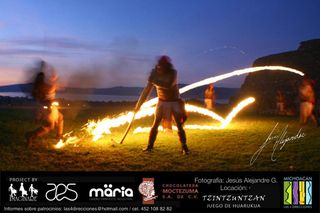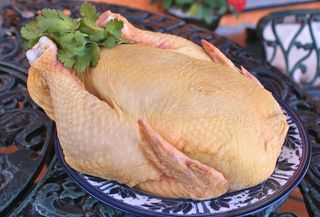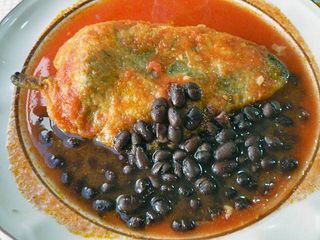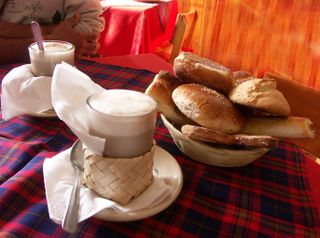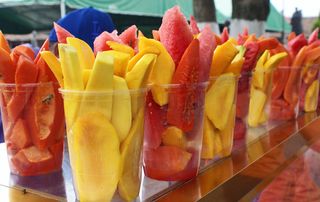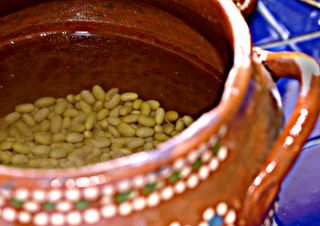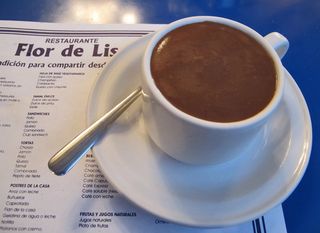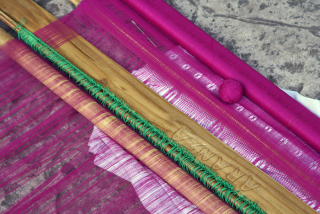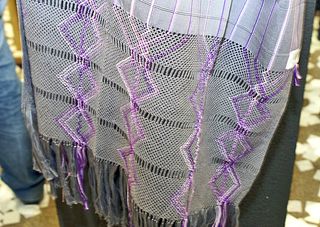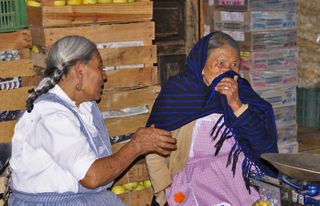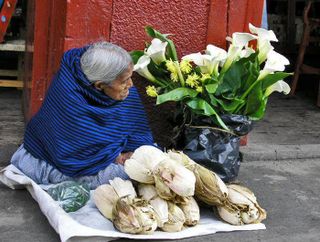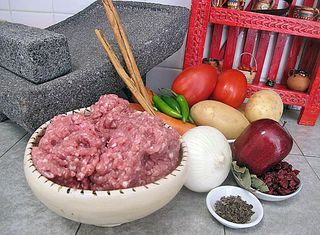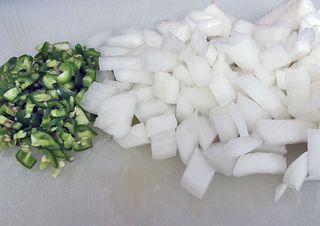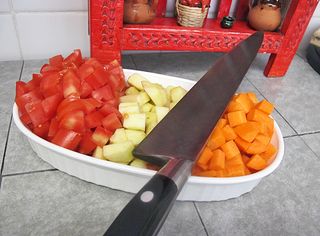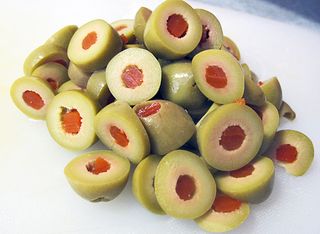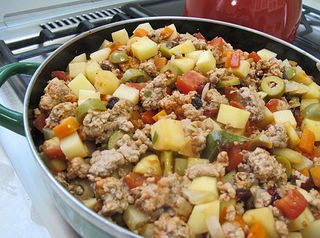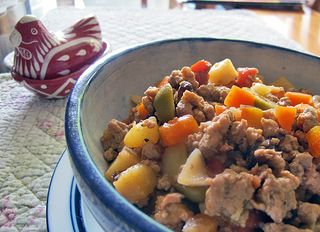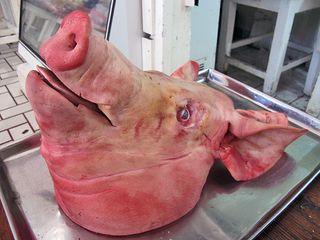
Carnicería (meat market), Mercado San Juan, Morelia, Michoacán. Would you consider this big pink pig head to be 'authentic' Mexican food? It truly is; every part of the head is used in Mexico for preparing one dish or another. Most commonly, the head is used for making pozole.
More and
more people who want to experience "real"Mexican food are asking about the
availability of authentic Mexican meals outside Mexico. Bloggers and posters on food-oriented websites have vociferously
definite opinions on what constitutes authenticity. Writers' claims range from the uninformed
(the fajitas at such-and-such a restaurant are totally authentic, just like in Mexico) to the ridiculous (Mexican cooks in Mexico can't get good ingredients, so
Mexican meals prepared in the United States are superior).
Much of
what I read about authentic Mexican cooking reminds me of that old story of the
blind men and the elephant. "Oh," says
the first, running his hands up and down the elephant's leg, "an elephant is
exactly like a tree." "Aha," says the
second, stroking the elephant's trunk, "the elephant is precisely like a
hose." And so forth. If you haven't experienced what most posters
persist in calling "authentic Mexican", then there's no way to compare any
restaurant in the United States with anything that is prepared or
served in Mexico. You're simply spinning your wheels.

The blind men and the elephant.
It's my
considered opinion that there is no such thing as one definition of authentic
Mexican. Wait, before you start
hopping up and down to refute that, consider that "authentic" is generally what
you were raised to appreciate. Your
mother's pot roast is authentic, but so is my mother's. Your aunt's tuna salad is the real deal, but
so is my aunt's, and they're not the least bit similar.
The
descriptor I've come to use for many dishes is 'traditional'. We can
even argue about that adjective, but it serves to describe the
traditional dish of–oh, say carne de
puerco en chile verde–as served in the North of Mexico, in the Central
Highlands, or in the Yucatán. There may
be big variations among the preparations of this dish, but each preparation is
traditional and each is authentic in its region.
I think
that in order to understand the cuisines of Mexico, we have to give up arguing about
authenticity and concentrate on the reality of certain dishes.

Traditional Mexican pork tacos al pastor (shepherd-style tacos) are a derivation of shawarma, traditional Middle Eastern spit-roasted lamb, chicken, or beef, imported to Mexico by Lebanese immigrants during the 19th century.
Traditional
Mexican cooking is not a hit-or-miss let's-make-something-for-dinner
proposition based on "let's see what we have in the despensa (pantry)." Traditional Mexican cooking is as complicated and precise as traditional
French cooking, with just as many hide-bound conventions as French cuisine imposes. You can't just throw some chiles and a glob of chocolate into a
sauce and call it mole. You can't simply decide to call something Mexican salsa when it's not. There are specific recipes to follow,
specific flavors and textures to expect, and specific results to attain. Yes, some liberties are taken, particularly
in Mexico's new alta
cocina (haute cuisine) and fusion
restaurants, but even those liberties are generally based on specific traditional recipes.
In recent
readings of food-oriented websites, I've noticed questions about what
ingredients are available in Mexico. The posts have gone on to ask
whether or not those ingredients are up to snuff when compared with what's
available in what the writer surmises to be more sophisticated food sources
such as the United States.
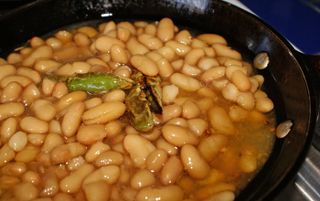
Frijoles peruanos (so-called Peruvian beans) heating in lard, almost ready to be mashed with a blackened chile serrano, resulting in Mexico's ubiquitous and iconic frijolitos refritos (well-fried beans).
Surprise,
surprise: most readily available fresh foods in Mexico's markets are even better than similar
ingredients you find outside Mexico. Foreign chefs who tour with me to visit Mexico's stunning produce markets are inevitably
astonished to see that what is grown for the ordinary home-cook user is
fresher, more flavorful, more attractive, and much less costly than similar ingredients
available in the United States.
It's the
same with most meats: pork and chicken are head and shoulders above what you
find in North of the Border meat markets. Fish and seafood are from-the-sea fresh and distributed every day, within just a
few hours of any of Mexico's coasts.
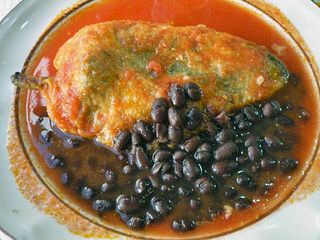
A traditional way to prepare and plate chiles poblano rellenos
(stuffed poblano chiles): a poblano chile, roasted, peeled, and seeded,
then stuffed with a melting white cheese. The chile is then dredged
with flour and covered with an egg batter and fried. It's served
floating in a pool of very light, mildly spicy caldillo (tomato broth).
Nevertheless,
Mexican restaurants in the United States make do with the less-than-superior
ingredients found outside Mexico. In fact, some downright delicious traditional Mexican meals can be had
in some North of the Border Mexican restaurants. Those restaurants are hard to find, though,
because in the States, most of what has come to be known as Mexican cooking is
actually Tex-Mex cooking. There's
nothing wrong with Tex-Mex cooking, nothing at all. It's just not traditional Mexican cooking. Tex-Mex is great food
from a particular region of the United States. Some of it is adapted from Mexican cooking and some is the invention of
early Texas settlers. Some innovations are adapted from
both of those points of origin. Fajitas, ubiquitous on Mexican
restaurant menus all over the United States, are a typical Tex-Mex
invention. Now available in Mexico's restaurants, fajitas are offered to the tourist trade as prototypically authentic.
You need to
know that the best of Mexico's cuisines is not found in
restaurants. It comes straight from
somebody's mama's kitchen. Clearly not
all Mexicans are good cooks, just as not all Chinese are good cooks, not all
Italians are good cooks, etc. But the
most traditional, the most (if you will) authentic Mexican meals are home
prepared.
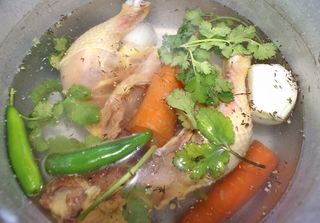
The simple ingredients of caldo de pollo (Mexican chicken soup) may vary in one or two aspects from region to region, but the traditional basis is what you see: the freshest chicken, onion, carrots, chile, and cilantro give flavor to the broth.
That
reality is what made Diana Kennedy who she is today: for 50 years, she has taken the time to
travel Mexico, searching for the best of the best of the
traditional preparations. For the most
part, she didn't find them in fancy restaurants, homey comedores (small commercial dining rooms) or fondas
(tiny working-class restaurants). She found them as she stood next to
the stove in a home kitchen, watching Doña Fulana (Mrs. So-and-So) prepare comida (the midday main meal of the day) for her family. She took the time to educate her palate,
understand the ingredients, taste what was offered to her, and learn, learn,
learn from home cooks before she started putting traditional recipes,
techniques, and stories on paper. If we
take the time to prepare recipes from any of Ms. Kennedy's many cookbooks, we
too can experience her wealth of experience and can come to understand what
traditional Mexican cooking can be. Her books bring Mexico's kitchens to us when we're not able to go to Mexico.

Diana Kennedy at the Universidad Nacional Autónoma Mexicana, June 2011.
In order to understand the cuisines of Mexico, we need to experience
their riches. Until that
time, we can argue till the cows come home and you'll still be just another blind
guy patting the beast's side and exclaiming how the elephant is mighty like a
wall.
Looking for a tailored-to-your-interests specialized tour in Mexico? Click here: Tours.
